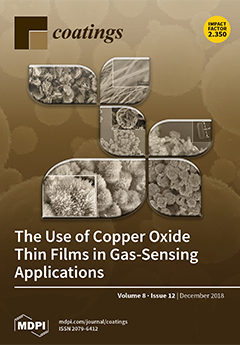Owing to a decrease in mineral oil resources, it is crucial to develop packaging materials based on renewable resources. Hence, a water vapor-barrier coating is developed as a natural wax-based dispersion. This dispersion should be stable over the storage time. In this study,
[...] Read more.
Owing to a decrease in mineral oil resources, it is crucial to develop packaging materials based on renewable resources. Hence, a water vapor-barrier coating is developed as a natural wax-based dispersion. This dispersion should be stable over the storage time. In this study, the physical stability of a wax-based melt dispersion was analyzed (24 h and 21 days after production), and instability phenomena such as agglomeration, coalescence, and flotation were identified. Furthermore, the inter-correlations among the particle size, viscosity of the continuous phase, physical stability, surfactant chemistry, and hydrophilic–lipophilic balance value were characterized. Particle sizes were described by volume/surface mean
d3,2, volume moment mean
d4,3, and number mean
d1,0 diameter, as well as the span of the volume and number distribution. Stability was characterized by the flotation rate, emulsion stability index, and Turbiscan stability index. Coalescence and agglomeration were not observed after the solidification of the wax particles. A significant correlation was observed for the emulsion stability index, with
d3,2, and for flotation rate, with
d1,0,
d4,3, and viscosity as well, with
d1,0,
d3,2. Surfactants with hydrophilic–lipophilic balance values of 11–13.5 seem to be the most suitable for stabilizing candelilla wax-in-water suspensions. Particles were smaller, and wax suspensions were better stabilized using Tween 20 and Span 20, compared with Tween 80 and Span 80.
Full article





